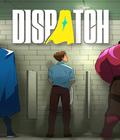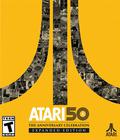
Genre: Action
Publisher: Universal Interactive
Developer: Computer Artworks
Release Date: 9/09/2002
 The Thing is the chronicles of what happened following the events depicted in the original 1982 John Carpenter horror movie of the same name. More precisely, it is a interactive sequel that allows you to play the part of rescue team captain who was dispatched after communication with the original scientists ceased. While it is not necessary to have watched the original film to enjoy this game it is highly recommended since there are a few references to it during the initial sequences of the game. Xbox owners will be happy to know that this version is the technically superior port of the game with a few aesthetic advantages in the form of multi-texturing and better bump-mapping. Unfortunately there are no bonus levels, modes of play, or other cool niceties that can usually be found in Xbox ports of multi-platform titles.
The Thing is the chronicles of what happened following the events depicted in the original 1982 John Carpenter horror movie of the same name. More precisely, it is a interactive sequel that allows you to play the part of rescue team captain who was dispatched after communication with the original scientists ceased. While it is not necessary to have watched the original film to enjoy this game it is highly recommended since there are a few references to it during the initial sequences of the game. Xbox owners will be happy to know that this version is the technically superior port of the game with a few aesthetic advantages in the form of multi-texturing and better bump-mapping. Unfortunately there are no bonus levels, modes of play, or other cool niceties that can usually be found in Xbox ports of multi-platform titles.
This game feels a lot like the movie in the sense that it purports a creepy, hold-your-breath and crap-your-pants kind of experience. Like the ill-fated scientists, you and your team soon discover that the enemy, or the ‘thing’ as it is so commonly referred to, has the ability to take the shape of human forms and infect people without them knowing until it is too late. This leads to the coolest aspect of the story, which is that you can never be sure who is infected, trust is not a cheap commodity in The Thing and some personalities easily fold under the pressure of paranoia.
While the basic mechanics of The Thing are not unlike other 3rd person shooters and survival/horror themed games there are a few dynamics that really set it apart. As you begin the game you’ll become acquainted with these elements via text pop-up messages that inform you about the variables of what will lead your teammates to panic, and what to do to calm them down. Also, considering that the temperature in Antarctica is negative forty you’ll often need to find shelter in order to prevent deadly exposure to nature’s elements.
Your original squad consists of a soldier, medic, and an engineer. Each provides a very important function; the medic can heal wounded team members, the engineer has the ability to bypass locked doors and operate complicated electrical devices, and the soldier can watch everyone’s back as they do their business. The character you play the part of is sort of a jack-of-all-trades since he can do a little bit of everything.
There will be occasional puzzles introduced throughout the game and most require that you utilize your team member’s unique abilities. For example in the warehouse area you’ll need to cover your engineers back as he is fixing a junction box. It should be noted that, regardless of team-member profession, they can always efficiently handle firearms, which prevents NPCs from becoming unneeded baggage. (Though they do have a tendency to stupidly walk into game-ending crossfire.) It is also possible to issue orders to your teammates, gamers who are easily discouraged from these kinds of complications need not worry though, they are nowhere near as complicated as most team-based games such as SOCOM or the Tom Clancy games. About the only issues you can order to your team is to follow, stay, or fix.
You’ll need to consistently monitor the trust and fear levels of team members since their performance is almost completely reliant on their level of sanity. When a character is starting to freak out he will look around erratically, vomit, and/or make comments about how his current mental state. If there are a lot of dead bodies lying around or dangerous aliens, the weaker-willed characters will almost assuredly start to flip out. Also, if you act suspiciously, either by taking your teammates weapon from them or if you seam to not be fighting the aliens as fiercely as they think you should, they’ll begin to lose trust in you and might eventually turn on you. While it is important to always retain as much trust as possible from your team it is also important to keep an eye on them to make sure they aren’t too suspicious either. The best way to verify that a teammate isn’t The Thing, or to prove to them that you’re not infected, is to perform a blood test, though the blood test devices are scarce and should be used only in dire situations.
Other less desperate measures can be taken in order to gain back the trust of your team such as giving them a powerful weapon to better protect themselves, giving them a shot of adrenaline to lessen their fear, or ordering them to follow you to another, less scary, area. Usually the members in your team will stick with you to the end but occasionally you’ll run across an abandoned military soldier whose distrust towards you is so severe that the only way to get him to believe that you aren’t The Thing is to accomplish tasks that he specifically asks you to do. These special circumstances consist of different things, for example, the first soldier requires that you search out a blood test kit and perform the test in front of him before he believes you aren’t the enemy. Another requires that you clean out an area of aliens before he is willing to join your team.
While the team management aspect of the game is incredibly enthralling, the game does not disappoint in the visceral shooting mayhem department either. The main perspective as you traverse areas and partake in shoot-outs will be an auto-aiming Max Payne-esque 3rd person perspective. You’ll have the option of changing your perspective to first-person mode by holding the R1 button, the first-person perspective doesn’t allow you to auto-aim but it does give you the ability to target specific areas of larger monsters and carefully kill them by dousing them with fire via a blow-torch or flame-thrower.
The various Thing Beasts, as they are called in the game, seem to be classified into one of three categories: spider-shaped baddies, human-sized monsters, and bosses which are huge and sinister Things that are comprised of multiple body components. The smaller beasties can be easily killed off with any assortment of weaponry but the larger enemies must first be chipped away at with artillery or grenades then doused with fire in order to be killed. The weapons and devices you’ll come across during the game range from a standard issue pistol, incendiary grenades, sniper rifle, night-vision goggles, machine gun, shot-gun, tazer, and more. These items will be scattered through the game’s many areas and are usually pretty easy to find.
The Thing looks good but it could have been so much more on the Xbox. The PS2 version was graphically kosher only because of the system’s limited hardware capability and aside from a few minor visual enhancements this version looks almost identical. There are neat little enhancements like the aforementioned texture and bump-mapping improvements but the only real graphical element of the Xbox port is the improved use of realistic lighting, which is pretty cool-looking but I expected more. One thing that I want to mention is that the game tends to “stutter” every few seconds, maybe I’m crazy but it seems like the frame rate is choppy, this is particular evident in cut-scenes. To my recollection, this was not as issue with the PS2 version.
The music in the game fits the dark and broody mood of the various environments nicely and actually features a few orchestrations that were used in the film. The soundtrack is comprised of slow, creepy tracks that successfully add to the overall appreciation of the game. Voice acting is first-rate and each character that you come across has an incredibly believable personality. Sound effects are extensively varied and no two weapons emit the exact same bang.
 Overall, The Thing proves itself as a movie-based game that not only defies the unwritten rule of sucking but also manages to be incredibly inventive, intuitive, unique, and entertaining. Somehow, Computer Artworks was able to blend the puzzle-solving elements of the survival/horror genre, the team-based play of SOCOM, and visceral thrill of Max Payne into one cohesive package. The trust/fear aspect of the game is interesting and can lead to useful spoils but what is even more surprising is that you need not take heed of these aspects in order to succeed. In fact, nearly every scenario in the game can be tackled in multiple ways; the game never forces you to take a linear approach to an objective except in cases where it is necessary to advance the story. Whether you enjoyed the movie – or even watched it for that matter, you’ll find that The Thing is an exceptional title that is worth checking out regardless of genre preference. Quite simply, The Thing is a rare exception in a genre where movie-to-game titles rarely succeed.
Overall, The Thing proves itself as a movie-based game that not only defies the unwritten rule of sucking but also manages to be incredibly inventive, intuitive, unique, and entertaining. Somehow, Computer Artworks was able to blend the puzzle-solving elements of the survival/horror genre, the team-based play of SOCOM, and visceral thrill of Max Payne into one cohesive package. The trust/fear aspect of the game is interesting and can lead to useful spoils but what is even more surprising is that you need not take heed of these aspects in order to succeed. In fact, nearly every scenario in the game can be tackled in multiple ways; the game never forces you to take a linear approach to an objective except in cases where it is necessary to advance the story. Whether you enjoyed the movie – or even watched it for that matter, you’ll find that The Thing is an exceptional title that is worth checking out regardless of genre preference. Quite simply, The Thing is a rare exception in a genre where movie-to-game titles rarely succeed.
Score: 8.1/10





































